Hardwick Heath
A journey through 1,000 years of history
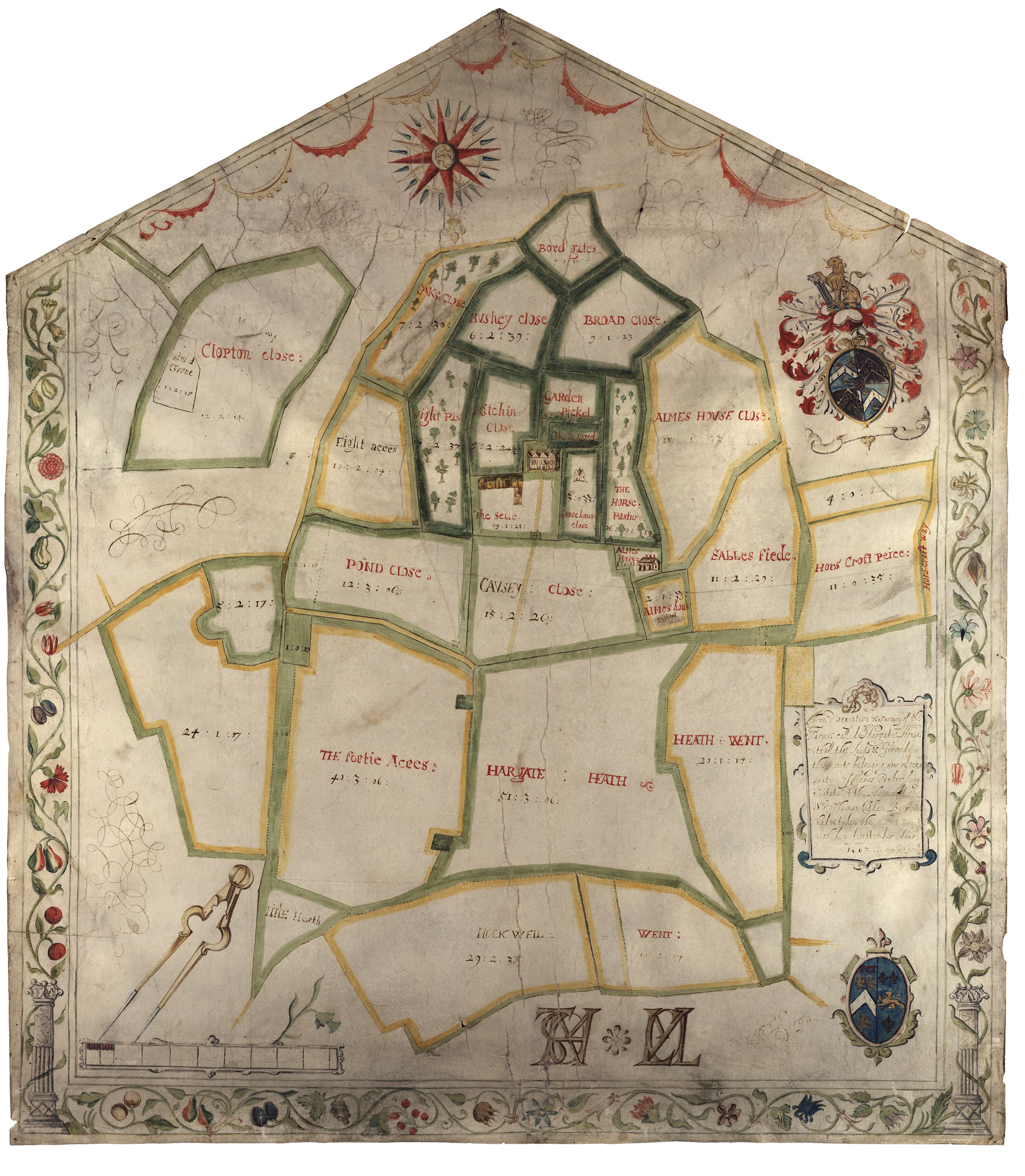
Welcome to Hardwick Heath!
Hardwick Heath has a rich history dating back over 1,000 years and has a wide range of uses.
If you have never been to Hardwick Heath, you may be wondering where it is located and what it borders. Hardwick Heath is located on the western edge of Bury St Edmunds. To the west you will find West Suffolk Hospital, to the south is a Scout campsite and the north and east sides are surrounded by housing.
Today, Hardwick Heath is a public park, enjoyed by walkers and dog walkers alike, as well as a football field, and just a green open space in amidst the businesses of Bury St Edmunds. Ultimately, it is a place to relax and explore. Hardwick Heath also houses a variety of wildlife, with some important habitats.
Hardwick Heath has also been the source of inspiration for the Rooted in History Project, run by Suffolk Archives and Art Branches. This project saw participants from Wedgwood House, the mental health unit of West Suffolk Hospital, and Gatehouse Dementia Hub create artwork based upon the rich history of Hardwick Heath. You will find images from this project scattered throughout this online display.
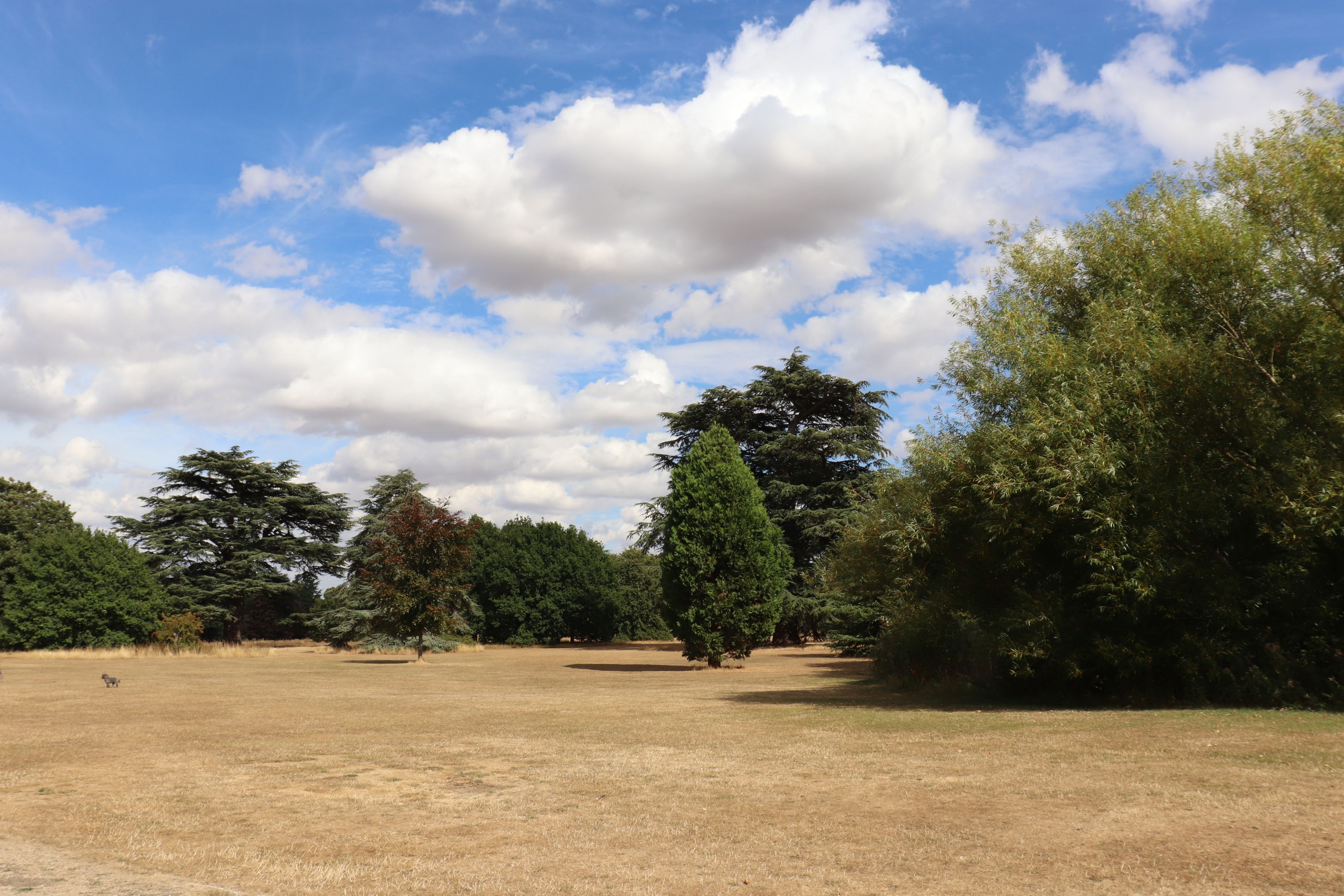
Part of Hardwick Heath in the very hot and dry summer of 2022
Part of Hardwick Heath in the very hot and dry summer of 2022
The origins of Hardwick Heath
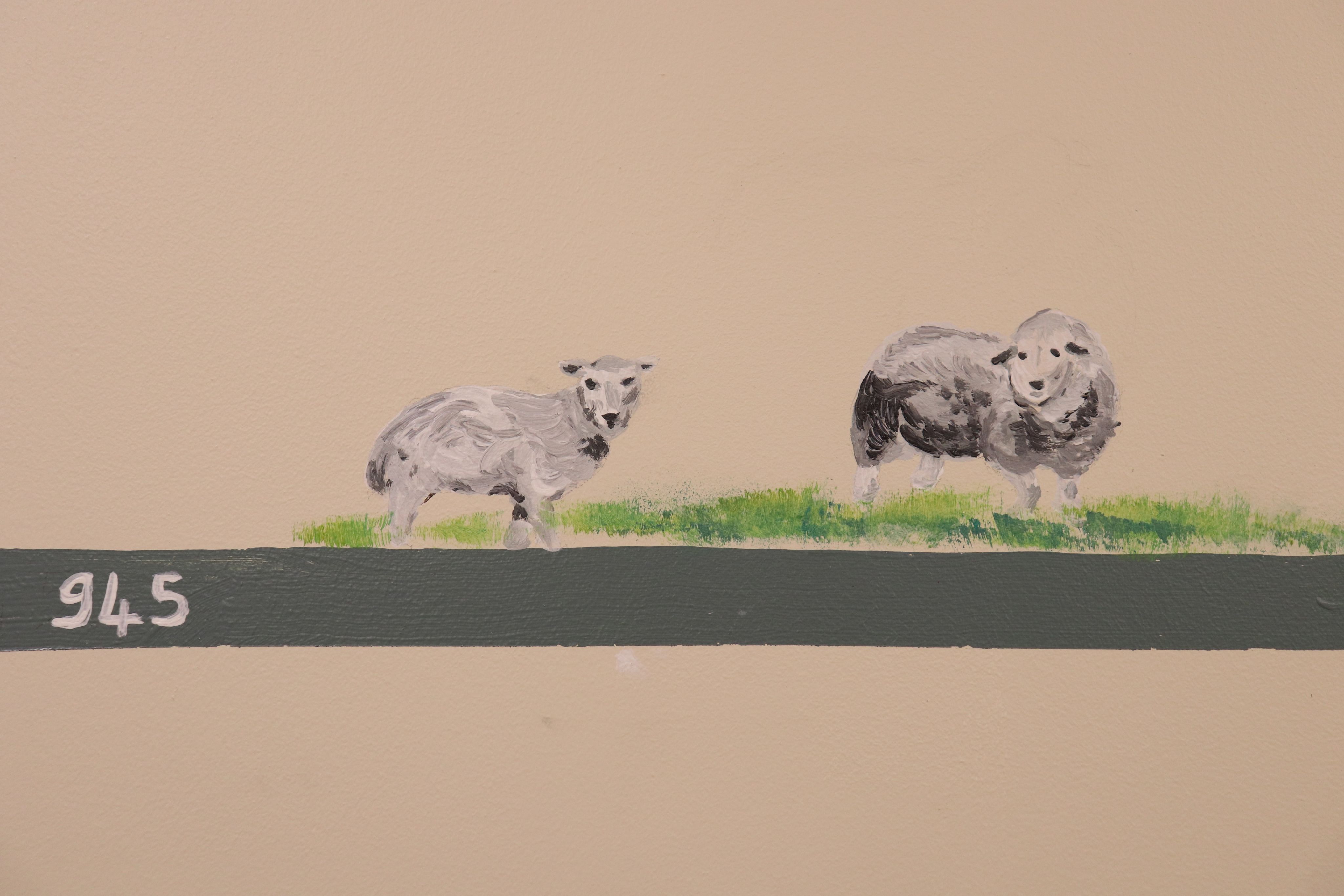
Painting of sheep from a mural about the history of Hardwick Heath, as part of the Rooted in History Project.
Painting of sheep from a mural about the history of Hardwick Heath, as part of the Rooted in History Project.
So, let’s begin our journey into the history of Hardwick Heath.
Our timeline of Hardwick Heath begins in the year 945 when King Edmund granted the land to the Abbey of Bury St Edmunds. Rental income from the land went to the Abbey’s Cellarer, who was responsible for the monastery’s stores of food and drink.
But what does Hardwick mean?
Well, the name Hardwick comes from ‘Herdwyk’ which means the lands of shepherds or sheep.
The end of the Abbey
Hardwick Heath remained in the ownership of the Abbey of Bury St Edmunds for nearly 600 years until the dissolution of the monasteries in the 1530s.
The dissolution of the monasteries was part of the Reformation under Henry VIII, which was driven by his desire to divorce his first wife, Katherine of Aragon, and marry Anne Boleyn.
After it was confiscated from the Abbey Hardwick Heath was granted to Sir Thomas Darcy. From there Hardwick Heath was passed through many owners until it was purchased by Sir Robert Drury in 1610.
A tour of the estate
Throughout its 1,000 years of history the Hardwick estate has undergone several changes. Let’s now take a tour of the estate using a map produced in 1663 (HD2418/93), and how it has changed (and in some cases not changed) over these years…
Hardwick House - its beginnings
So, how did Hardwick House come into being?
Sir Robert Drury originally lived in Hawstead Place – which was nearby Hardwick Heath.
However, Sir Robert Drury could not stand staying in Hawstead Place after losing his only child, Elizabeth, and so decided to build a new house on Hardwick Heath – named – you guessed it – Hardwick House.
The house he built can be seen on this map, which was made a few decades later.
Almhouses
As well as building Hardwick House Sir Robert Drury built an almhouse nearby, which could house up to six unmarried women and can be seen in this map.
Horscroft Way
One feature we see on the map which has not changed much over the centuries is the name for Horscroft Way, which today is Horsecroft Road.
The compass rose
The compass rose on this map shows us that south is at the top of the map, and north at the bottom. There was no standard practise of putting north at the top of maps at this time, which can make historical maps a little tricky for our modern eyes to read.
Who made this map and why?
The description on the map tells us that it was made by Thomas Covell for Sir Thomas Cullum, who bought the Hardwick estate in 1656. Maps like this were used as estate-management tools, and also as status symbols for landowners.
Eagle-eyed readers might spot that the map refers to Hargate Heath and House rather than Hardwick - this was an alternative name for the property at the time.
The Cullum family come to Hardwick
In 1656 the Hardwick Estate was purchased by Sir Thomas Cullum for £17,787. Sir Thomas came from a Suffolk family and became wealthy as a cloth merchant in London.
However, Sir Thomas lived during the turbulent times of the English Civil Wars. In this battle between King Charles I and Parliament, Sir Thomas supported the King. Up to 200,000 people lost their lives in the conflict, about 4.5% of the population - a similar proportion to WWI.
In the 1640s Thomas Cullum was living in London. In September 1647 he was imprisoned in the Tower of London for his role in an attempted counter-revolution; he remained there for six months, being released in March 1648.
When the monarchy was restored in 1660 Sir Thomas was made a Baronet for his loyalty to the Crown.
He had amassed significant wealth before his death in 1664.
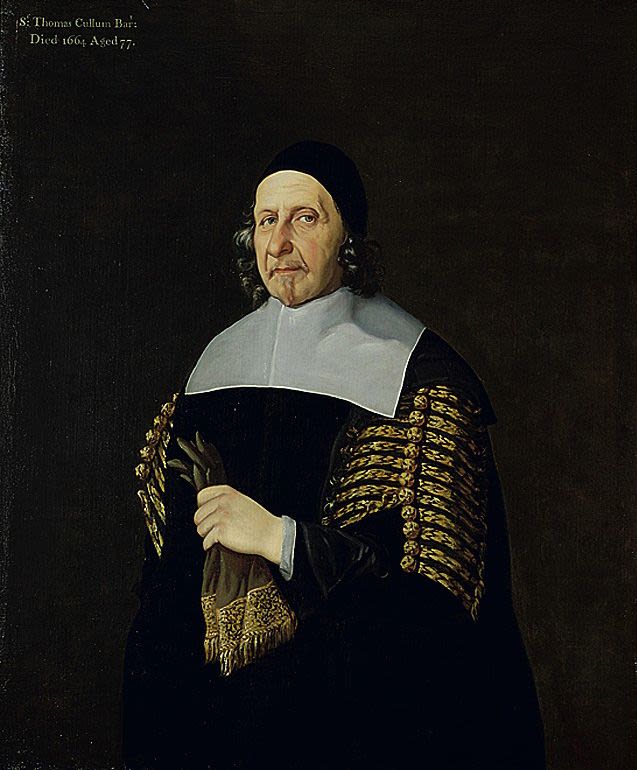
Sir Thomas Cullum, 1st Baronet, d.1664. Painting attributed to Gerard Soest, courtesy of West Suffolk Heritage Services
Sir Thomas Cullum, 1st Baronet, d.1664. Painting attributed to Gerard Soest, courtesy of West Suffolk Heritage Services
The Later Cullums
This family, over multiple generations, would live at Hardwick House for nearly 300 years from 1656 to the 1920s.
Several of the Cullums were experts in either history or science, particularly medicine and botany.
The family also loved books. Indeed, more than one library of books existed within the house. Today, their library of books is stored at the Bury St Edmunds branch of Suffolk Archives.
The Cullums also built up an extensive collection of paintings and sculptures. This photograph shows a space described in 1924 as the 'Statue Corridor'.
No surface in this room escaped an elaborate decorative pattern. We can also see evidence of the Cullum family's love of collecting paintings and ceramics.
Over the centuries that the Cullums lived at Hardwick House, they extensively remodelled and extended the house and laid out formal gardens and park land.
The parks and gardens of Hardwick Heath
Over many generations the Cullum family and their gardeners created an extensive landscape of parkland and gardens around Hardwick House.
By the early twentieth century the gardens included a two-acre kitchen garden with pear, peach, plum, apple, cherry, and fig trees, a Italian Garden with rosery and flowerbeds, avenues of lime and sycamore trees , pleasure grounds with gazebos and exotic planting, a Winter Garden – a range of glass houses where oranges, peaches, vines, and palm trees could be grown - and a Venetian indoor riding school.
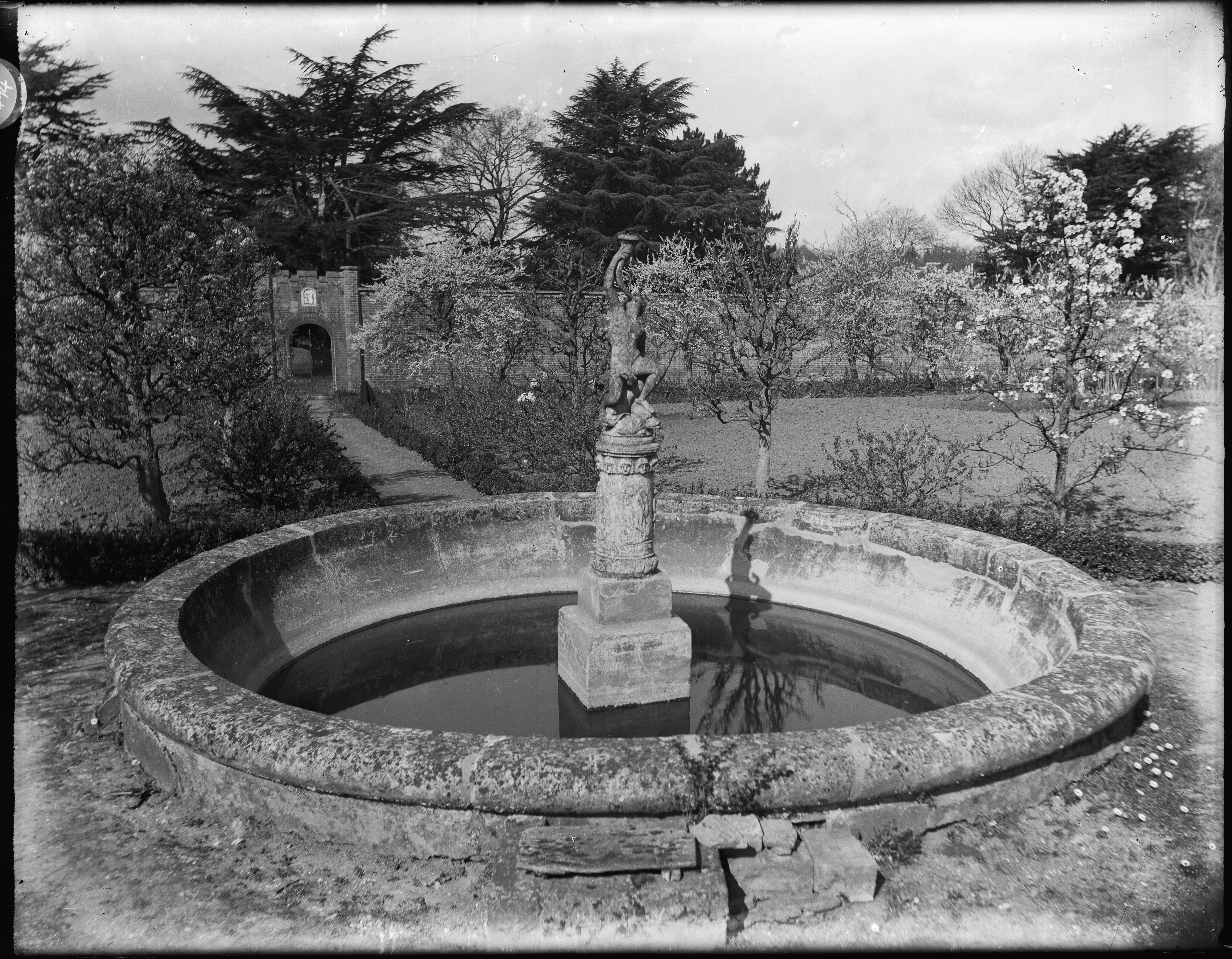
Fountain in the kitchen garden, K505/494, courtesy of the Bury Past and Present Society
Fountain in the kitchen garden, K505/494, courtesy of the Bury Past and Present Society
One of the most notable features of the gardens was its extensive glass houses, which enabled tropical plants to be grown. These glass houses were described in the Bury Free Press on 10th August 1861:
‘The entrance-hall leads to the first of a series of conservatories and other houses well stocked with plants usually cultivated under glass, and forming a spacious range of about 900 feet, including Vineries and Peach house. The first house is fed from the others and arranged with much taste. The contents of all the parts of the range are looking healthy, but the chief attraction is the noble collection of plants with variegated foliage. The Caladiuros are in great vigour and in the highest beauty, their leaves resplendent with hues, and of immense size... Mingled with these, and tastefully adjusted, are numerous exotics flourishing excellently, and a banana bearing fruit.’
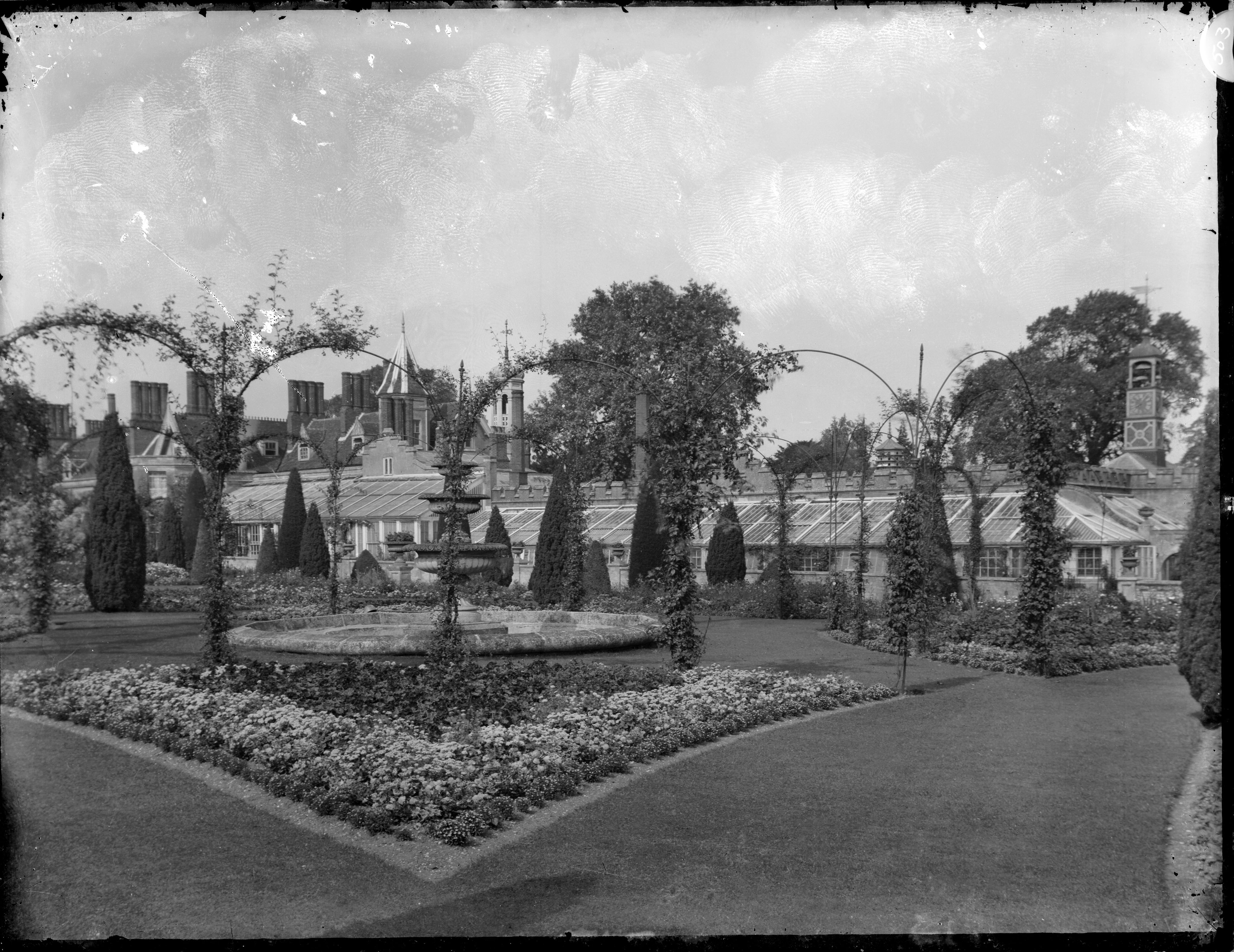
This eastern end view of the garden shows the clock-tower as well as some of the extensive glass houses and the Indoor Riding School, K505/503, courtesy of the Bury Past and Present Society.
This eastern end view of the garden shows the clock-tower as well as some of the extensive glass houses and the Indoor Riding School, K505/503, courtesy of the Bury Past and Present Society.
Over the centuries, several owners contributed to the overall shaping of the gardens. For one owner, Lady Anne Cullum, her lifelong interest in the gardens continued to the very moment of her death:
'...to the last her personal attention was applied to the adornment of her charming grounds, for only a few moments before her fatal seizure she was consulting with her gardener, Mr. Fish, on the most suitable spot for planting some cypress trees — a significant end to what was to her a labour of love.’
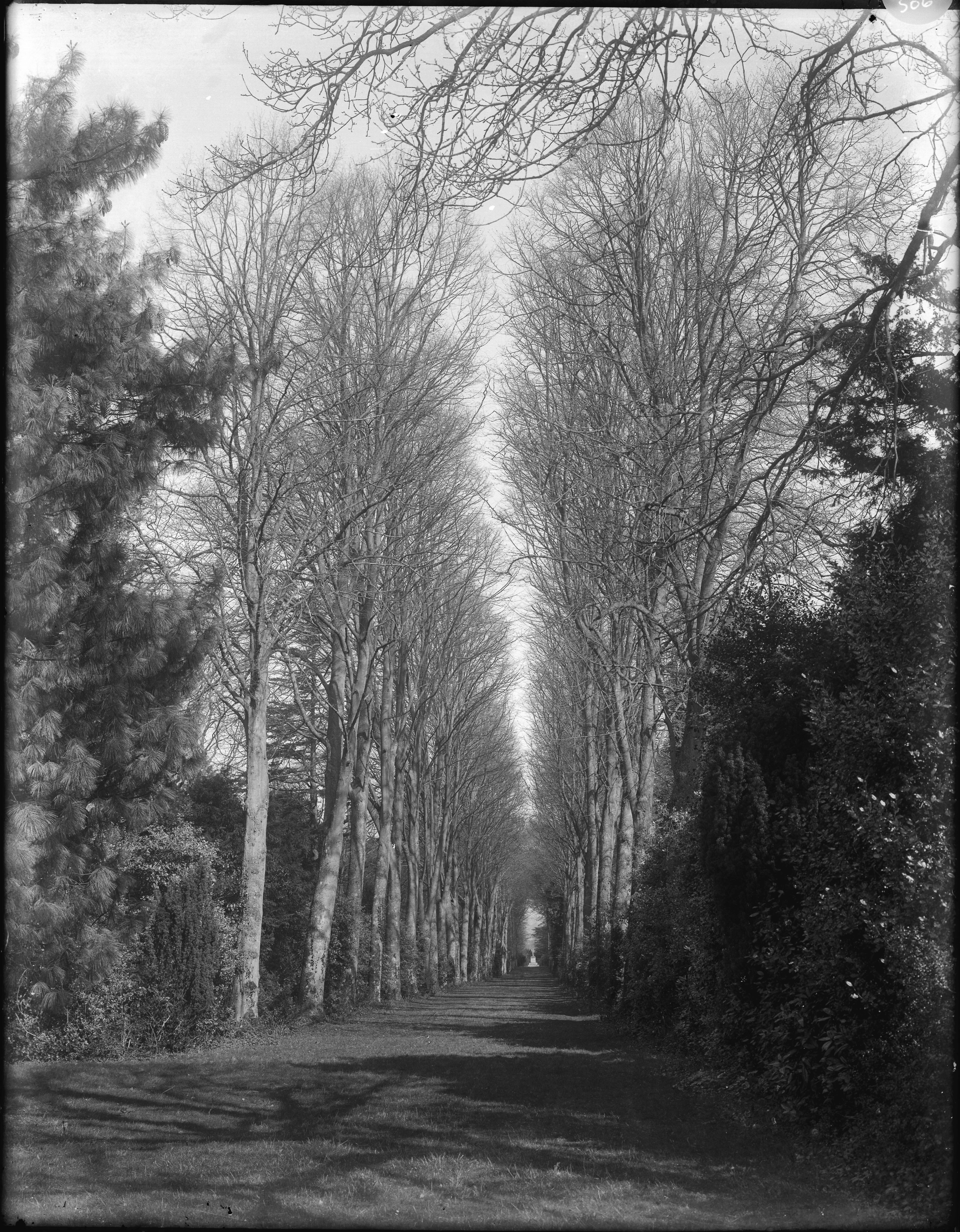
The avenue of lime and sycamore trees, K505/506, courtesy of the Bury Past and Present Society
The avenue of lime and sycamore trees, K505/506, courtesy of the Bury Past and Present Society
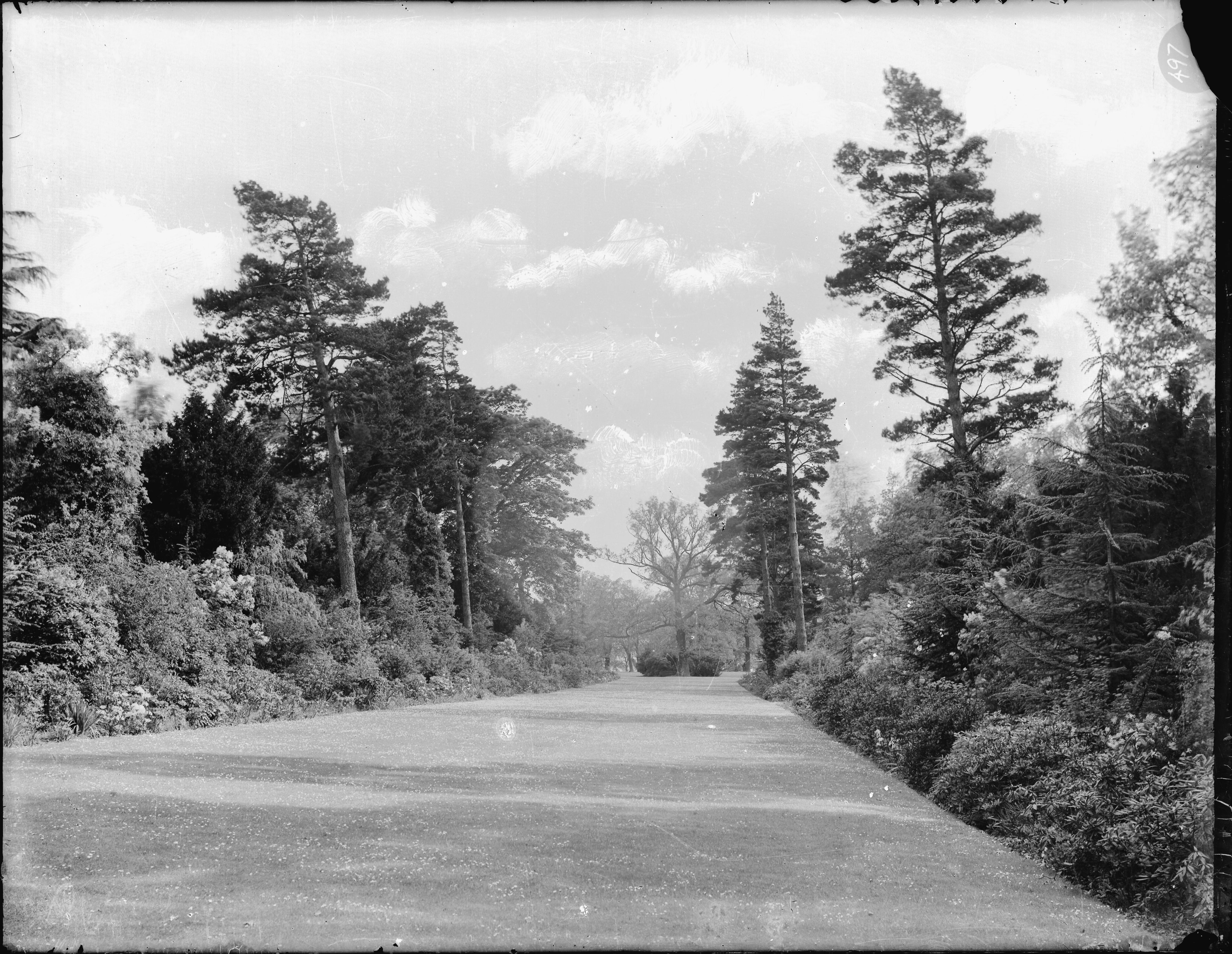
View of park of Hardwick House, K505/497, courtesy of Bury Past and Present Society
View of park of Hardwick House, K505/497, courtesy of Bury Past and Present Society
Community events at Hardwick Heath
During its 1,000 years of history, Hardwick Heath was the location of many important community events, including galas and fetes which raised money for local organisations such as hospitals, orphanages, and the fire brigade.
In 1880 the 11th annual Temperance Fete included a procession from the town centre, a show of fruit, flowers, and vegetables, a drawing competition, sports, and a picnic tea.
In June 1884 a fete included a bazaar in the indoor riding school, sports, dancing, an art exhibition, and music from a military band.
At a 1924 fete to raise money for the local hospital, the crowds could watch a military parade and musical performance by the 1st and 2nd Guards Band, local village teams battling it out in a tug-of-war, gymnastic displays, numerous trade stalls, teas served on the lawn of the house, sword, lance and revolver competitions, a ‘wild west’ show, a ‘Red Cross competition’, with awards for triaging, bandaging & various forms of first aid, a beer and whiskey competition (reportedly well-attended), and a fireworks display.
This image shows the souvenir programme of the Suffolk Tattoo at Hardwick Heath on the 12th of June 1965 (HD 2272/317/5).
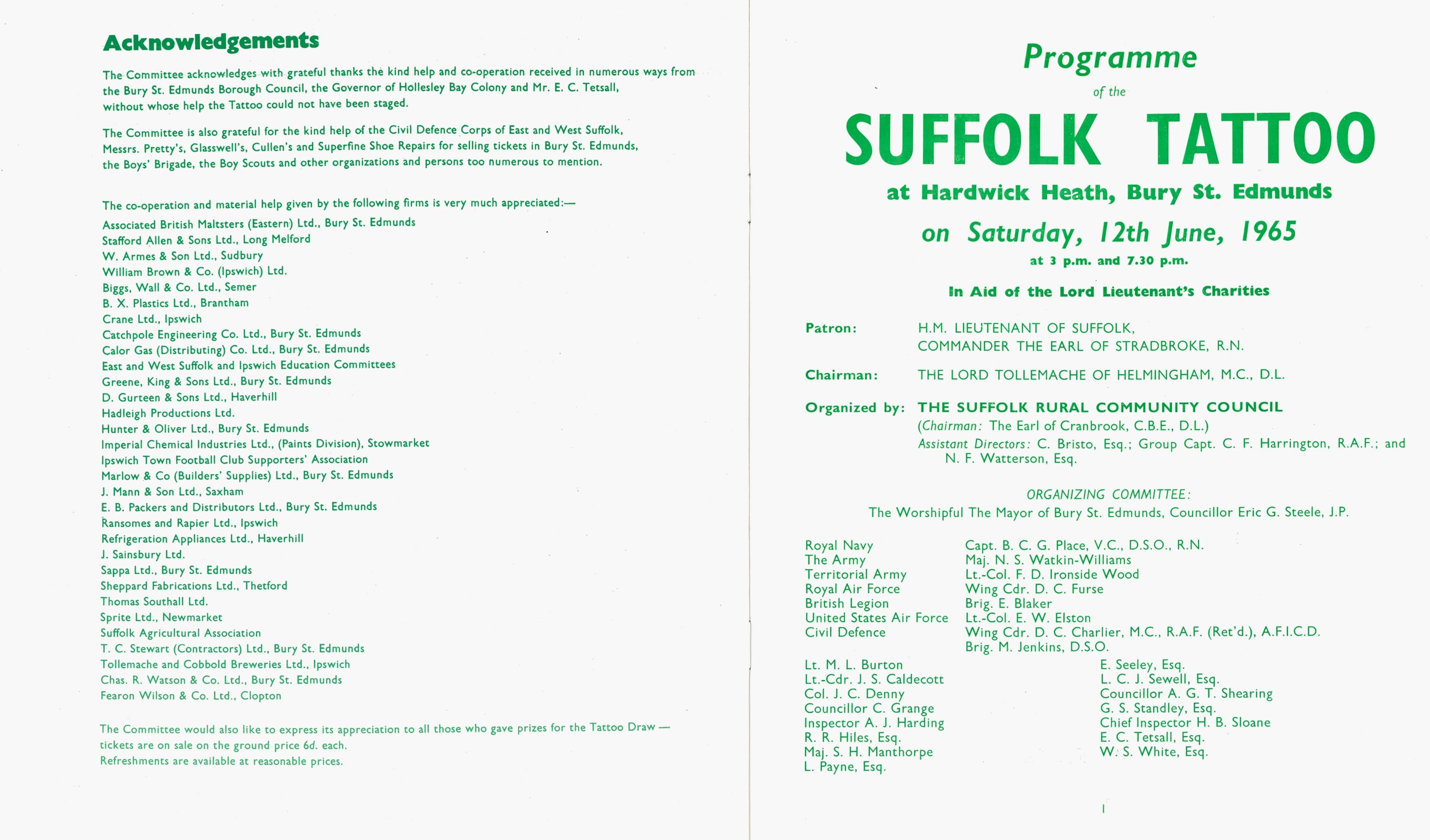
The Last Cullum of Hardwick
A visitor to Hardwick in 1921 was shown around by the then owner George Gery Milner-Gibson-Cullum. They wrote of their visit in the Bury Free Press:
‘…Of the China, pictures and antiques which crowd the rooms I cannot deal in detail, but one might spend weeks in examining them without exhausting their interest. After a ramble through the corridors, I one day asked him how many framed engravings, etc., there were in the house, and he replied that a guest had counted over thousand’
Later that year George Gery Milner-Gibson-Cullum died without heirs, bringing to an end 300 years of Cullum ownership of Hardwick.
Hardwick Heath Under the Hammer - 1924 to 1926
In 1924 the contents of the mansion were sold in an auction which consisted of an eye-watering 1,744 lots and lasted five days.
The council purchased 60 hectares of land for use as a public park.
There are 2 large auction catalogues stored at the Bury St Edmunds branch of Suffolk Archives which detail the sales that took place.
A video showcasing the 1924 auction catalogue
A video showcasing the 1924 auction catalogue
Despite the Bury Free Press on May 16th 1925 reporting the successful sale of the house, this must have fallen through as the fabric of the mansion was sold at auction in 1926 for building materials.
The auction and eventual demolition of the house were big news in the local press. A report from the Suffolk and Essex Free Press reads as follows:
The hammer and chisel of the breaker are already casting their dismal echoes through Hardwick House—the ancient home of the Cullum family—following the three-days sale this week of the fixtures and fittings of the fine old West Suffolk Mansion, which will soon be no more.
There was also a poem mourning its demolition which appeared in the Bury Free Press on Saturday 6th November 1926.
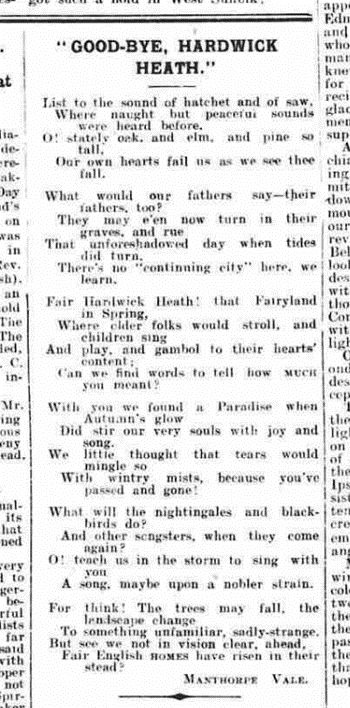
A scan of the poem mourning the demolition of Hardwick House which appeared in the Bury Free Press on Saturday 6th November 1926. Courtesy of the Bury Free Press.
A scan of the poem mourning the demolition of Hardwick House which appeared in the Bury Free Press on Saturday 6th November 1926. Courtesy of the Bury Free Press.
The Second World War
Where a football pitch lies today hides a significant piece of Hardwick Heath’s history, as, during the Second World War, this area was home to a prisoner of war camp (Camp 260).
Initially the camp housed Italian prisoners after Allied victories in North Africa. However, as the war progressed, these prisoners were joined by captured German soldiers.
Prisoners worked in the local area and work parties were collected by farmers to work on the surrounding land. Borough Council accounts show that some of the roads on the Mildenhall Road estate were built by prisoners living at Camp 260. Some prisoners also worked at Gibraltar Barracks, the HQ of the Suffolk Regiment, where they worked in the messes, cookhouse, Quartermaster’s Stores, and did other odds jobs.
Prisoners were allowed into Bury at the weekends and some established friendships with the townsfolk.
In 1946, in the UK, there were over 380,000 German prisoners of war. Of which, Hardwick Heath hosted 2,000 prisoners in about 64 prefabricated Nissen huts.
By 1947, the Suffolk Free Press reported on the ‘recognition of bravery’ received by German P.O.W. Gottfried Dappert, a prisoner at Camp 260, after rescuing a Lawshall man from an attack by a bull.
The camp was in use until 1948, at which point the last men were either repatriated or remained living locally.
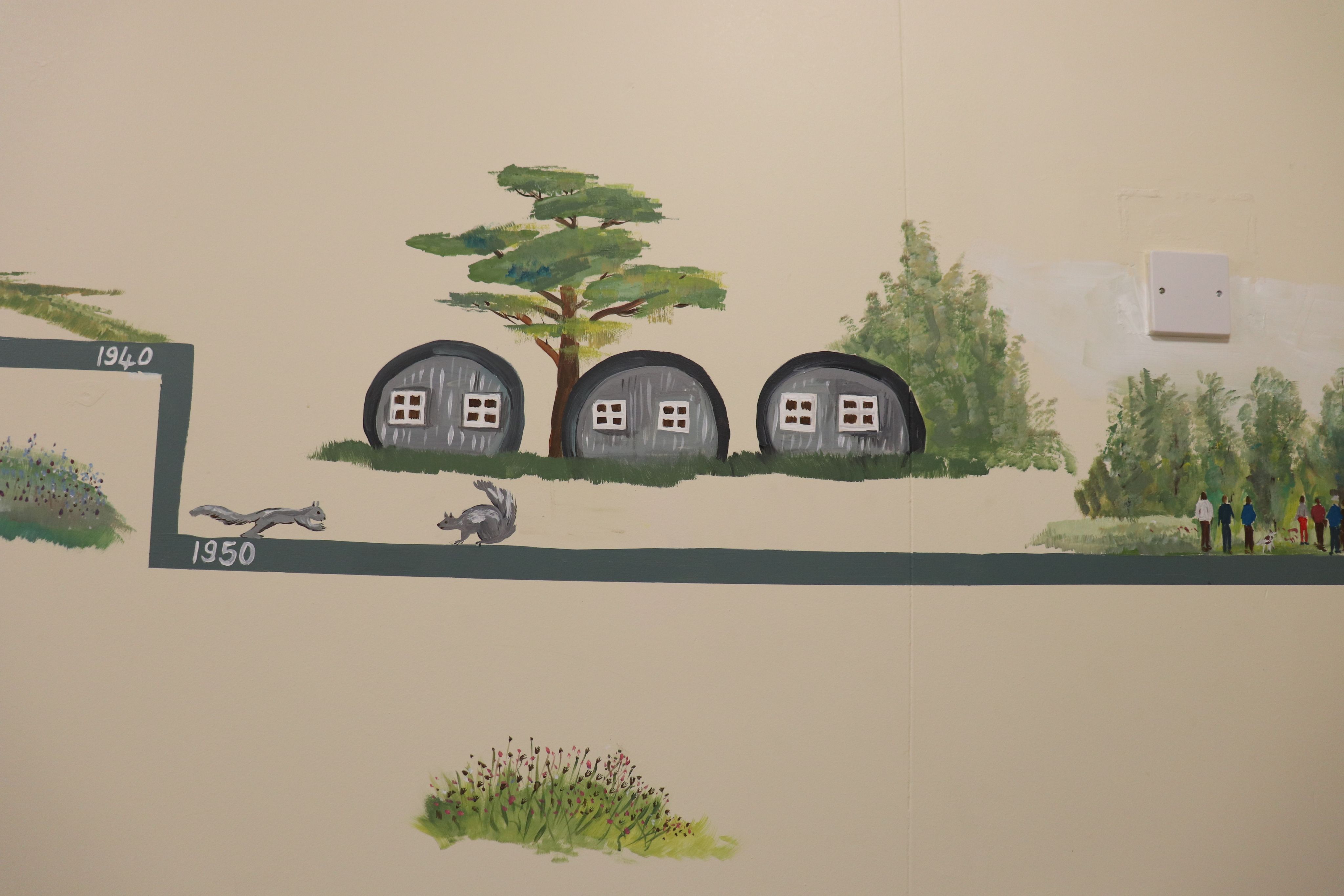
Painting of WW2 Nissen huts which were used as emergency housing after the war. Part of a mural painted for the Rooted in History Project.
Painting of WW2 Nissen huts which were used as emergency housing after the war. Part of a mural painted for the Rooted in History Project.
Post-war Hardwick
Amidst a severe housing shortage in the post-war period, the camp was turned into emergency housing for up to 56 local families.
Bert Cook, who moved into one of the Hardwick huts in 1948 with his new wife and their young sons, remembers what life was like in the huts:
The Nissen hut was divided into 4 rooms – 2 bedrooms, living room and kitchen. There was no heating other than the coal cooking range that had been put in the kitchen area. It was very cold and in winter icicles would form on the inside of the corrugated iron roof and drop to the floor. There was no running water or bathroom. Outside, the huts were served by about 4 stand pipe taps from which water had to be fetched. Each hut had its own outdoor toilet at the back. Another hut was made into a shared bathroom block, shared amongst about 10 families… Hardwick camp was a very friendly place to live. Everyone had to muck in to help each other out.
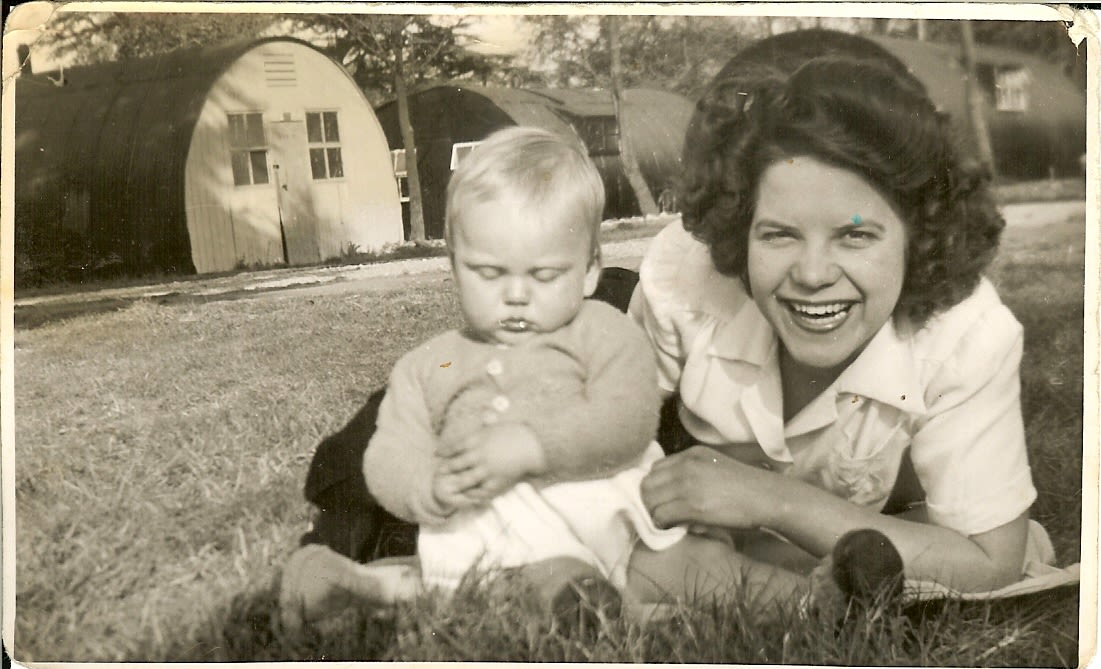
An image of some of the Cook family taken during their time living at one of the Nissen huts, courtesy of the Cook family.
An image of some of the Cook family taken during their time living at one of the Nissen huts, courtesy of the Cook family.
In the early 1950s, the Hardwick camp residents were rehoused as prefabs or new council houses became available. The tin huts were removed, and the land once again became a public park.
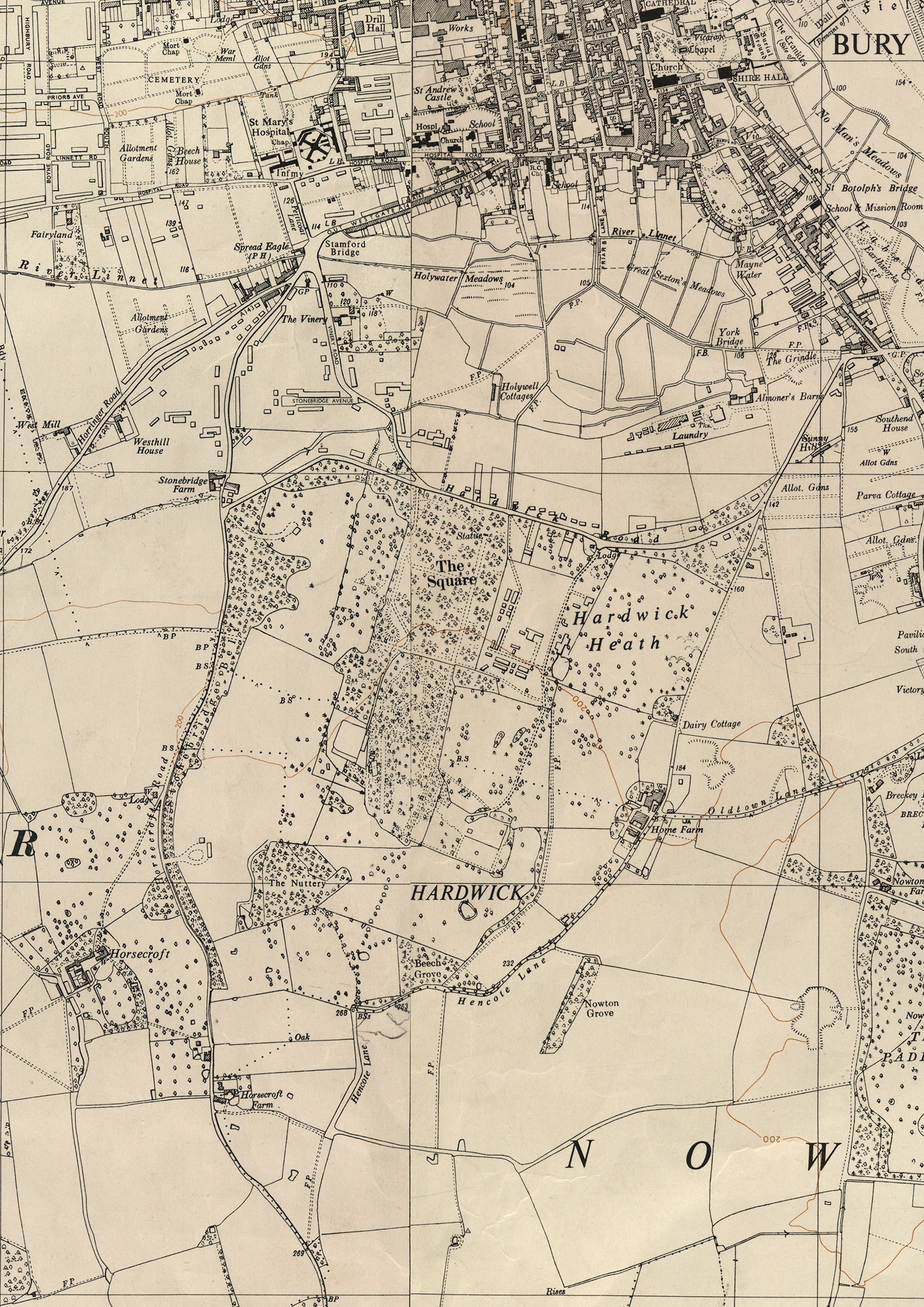
An Ordnance Survey 6 inch map published in 1958 showcasing where Hardwick Heath is located.
An Ordnance Survey 6 inch map published in 1958 showcasing where Hardwick Heath is located.
Today
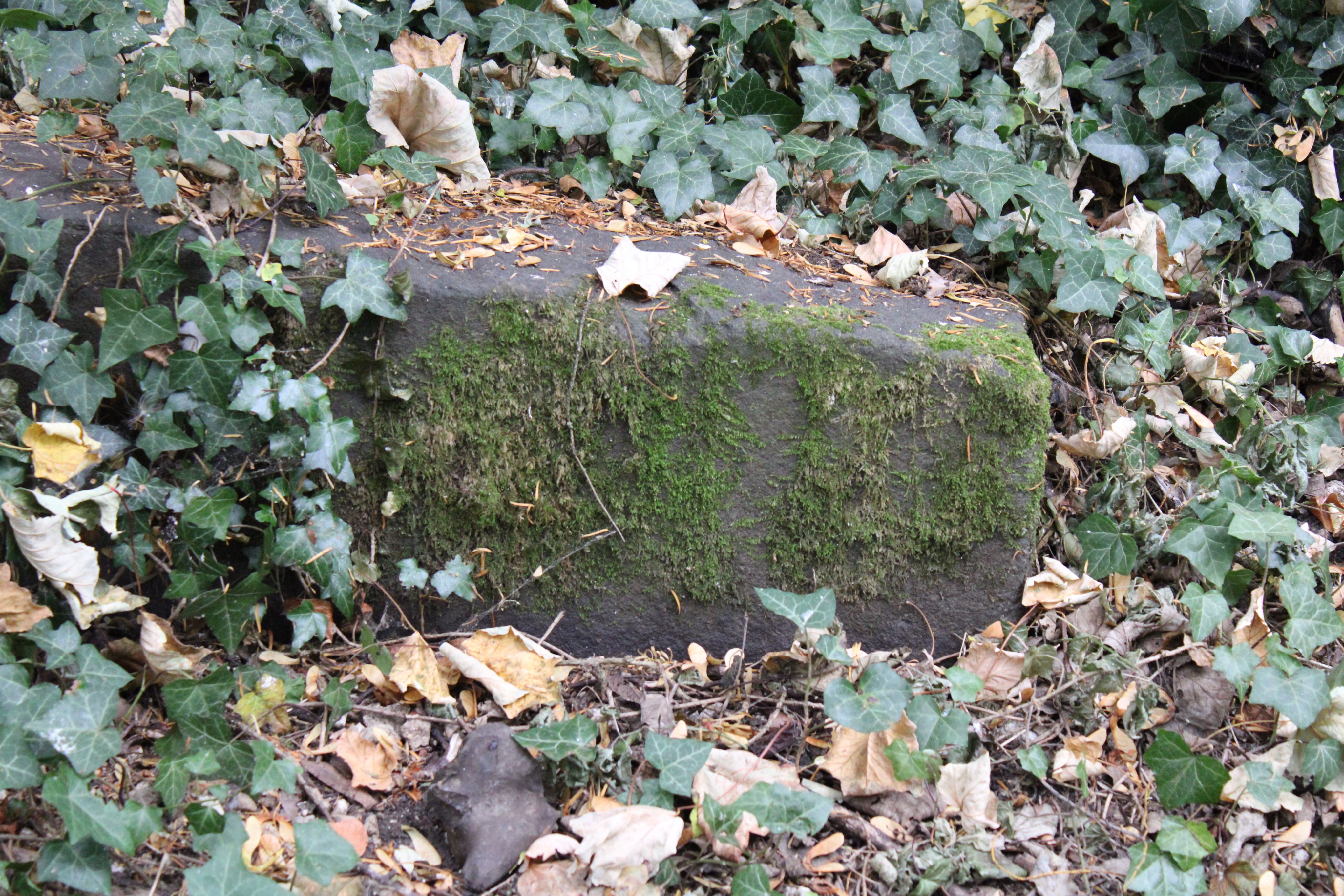
A brick - heavily engulfed with moss - is a clue to where Hardwick House once stood.
A brick - heavily engulfed with moss - is a clue to where Hardwick House once stood.
The House
If we look hard enough, some fragments of the house remain and can be seen scattered within the woodland that stands in its place today.
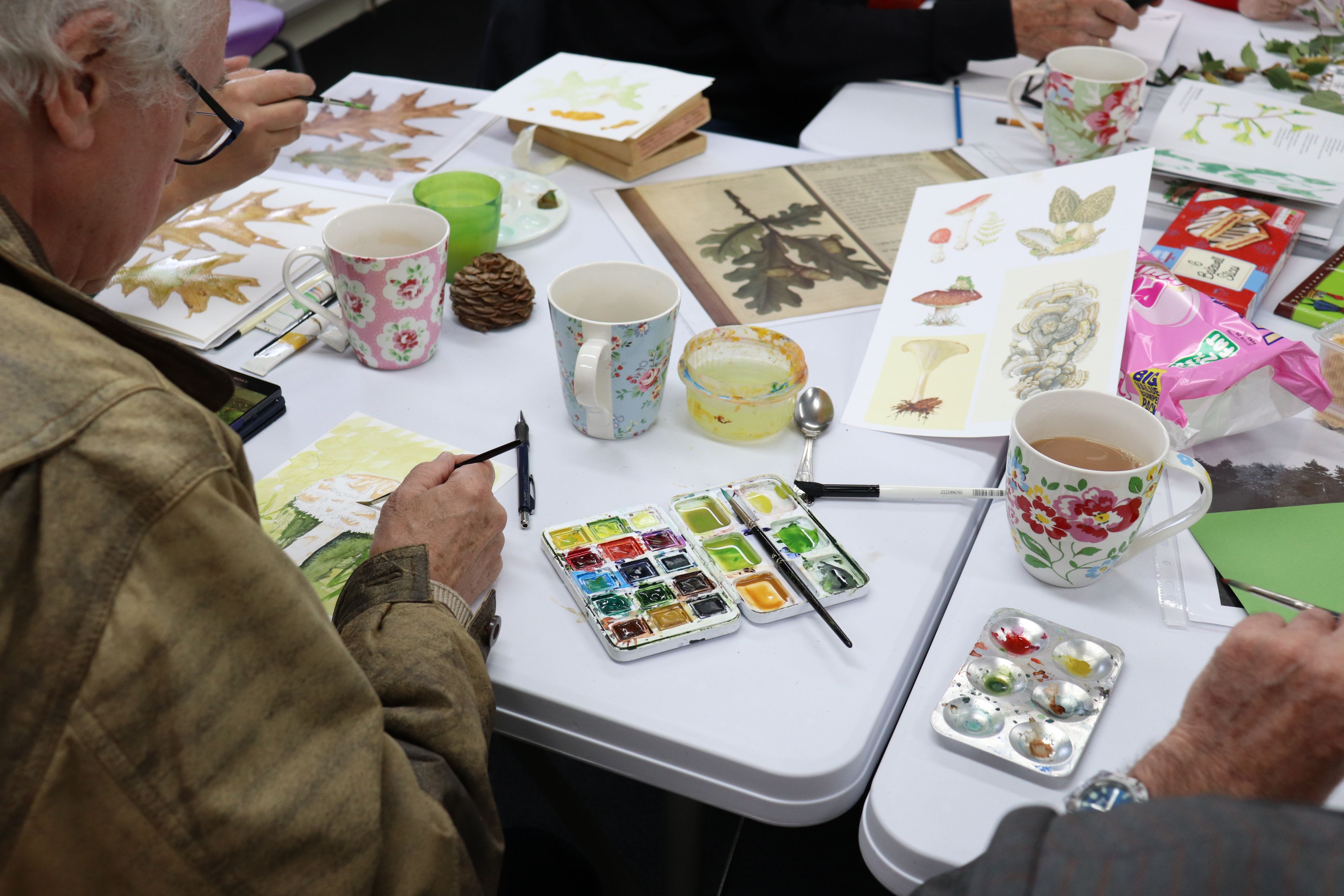
Participants participating in the Rooted in History Project.
Participants participating in the Rooted in History Project.
The Rooted In History Project
Today, Hardwick Heath was also the inspiration for the Rooted in History project, run by Suffolk Archives and Art Branches and we have seen the varied artwork created as part of this project throughout the exhibition.
The below gallery showcases more images from this project both of the mural as well as the participant's work. Click on each one to make full screen.
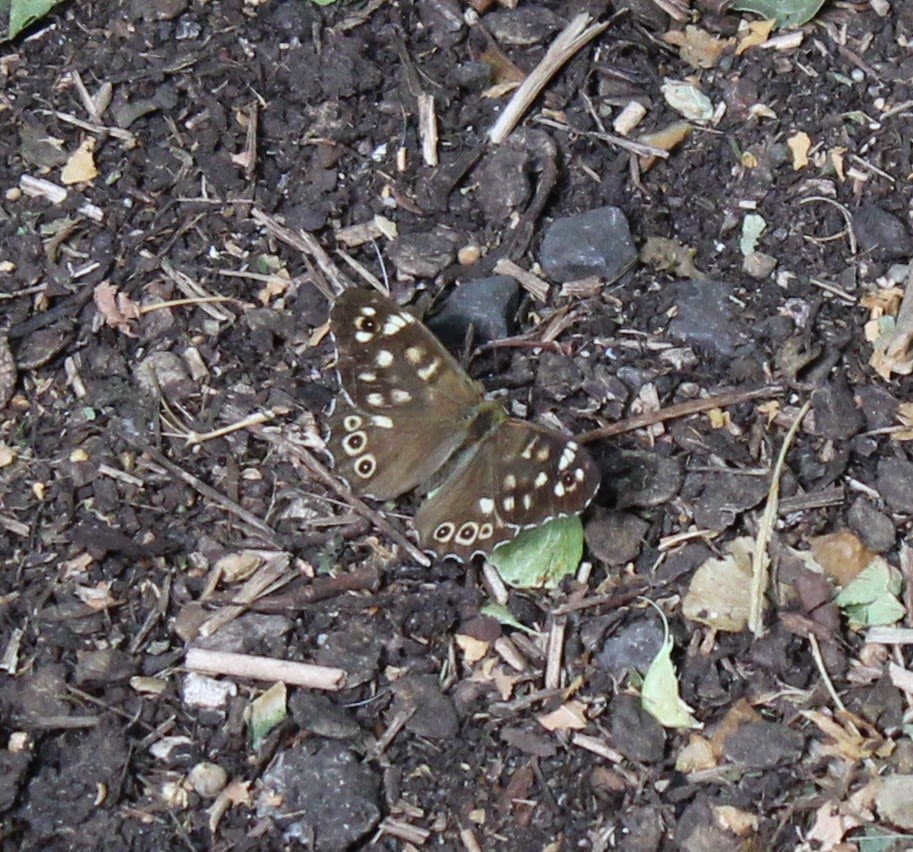
In the centre of this image is one of the many species that call Hardwick Heath home, the Speckled Wood (Pararge aegeria) butterfly. This is a woodland specialist which can be found on the wing between early April and end of September.
In the centre of this image is one of the many species that call Hardwick Heath home, the Speckled Wood (Pararge aegeria) butterfly. This is a woodland specialist which can be found on the wing between early April and end of September.
Wildlife
Hardwick Heath is also home to a variety of wildlife. Whether it be its woodlands which house important habitats or areas of wood pasture and parkland which are marked as British Action Priority habitats. Hardwick Heath, and the surrounding spaces, are also home to key breeding areas for corn buntings, grey partridge, lapwings, and stone curlews – species that are drastically declining. Finally, certain areas of the heath are rated as having ‘high’ botanical values, based on surveys conducted from 1970 to 2021.
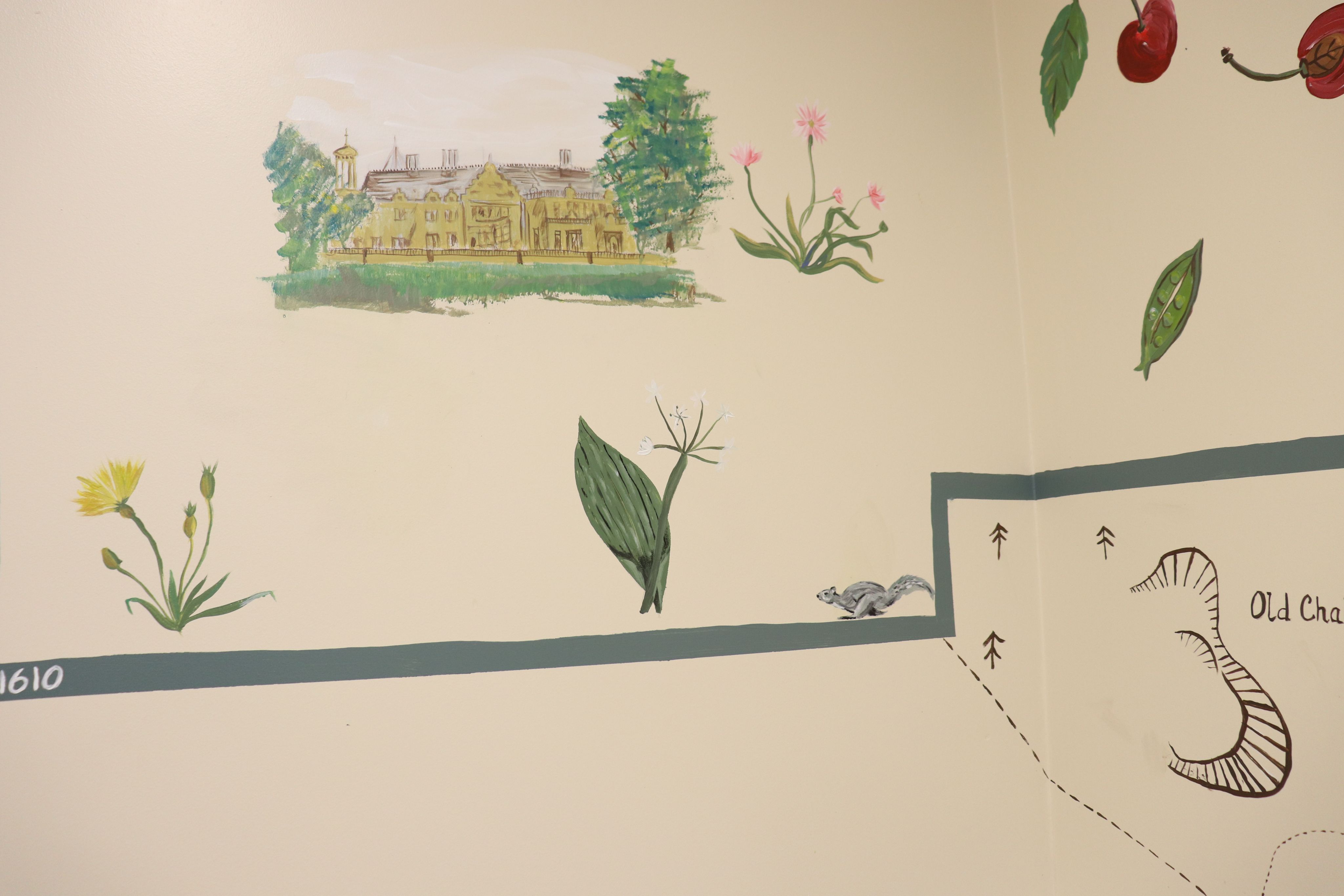
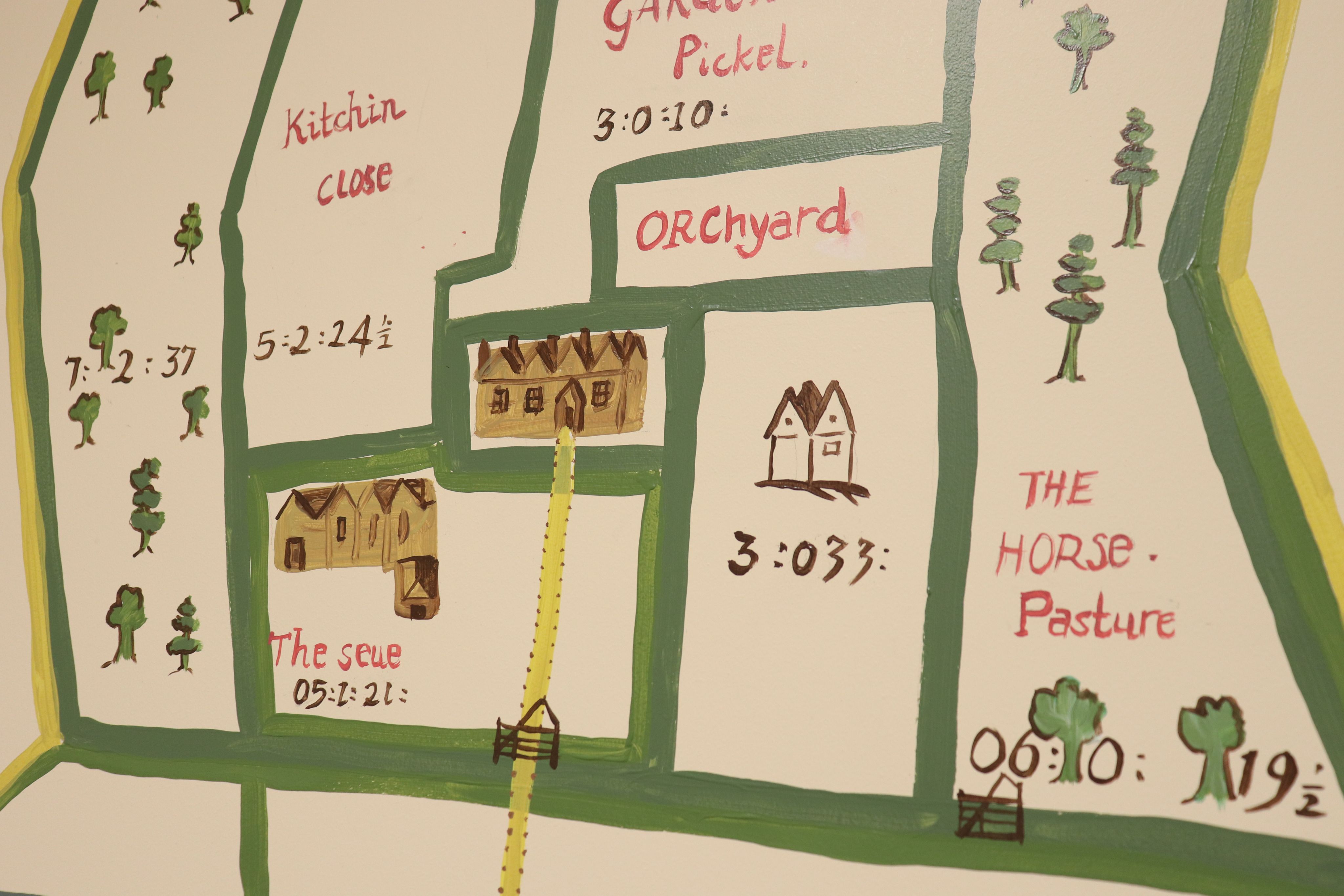
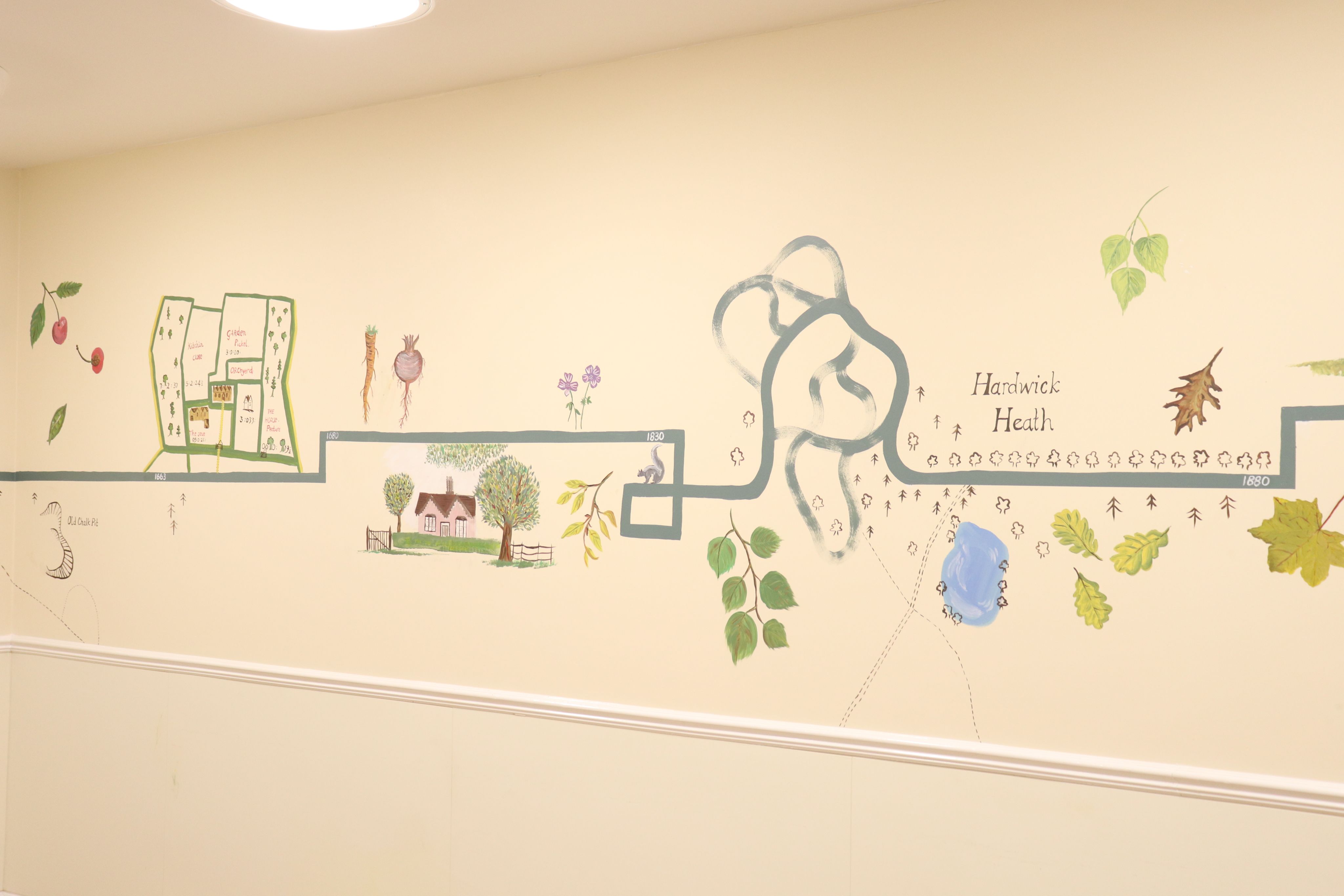
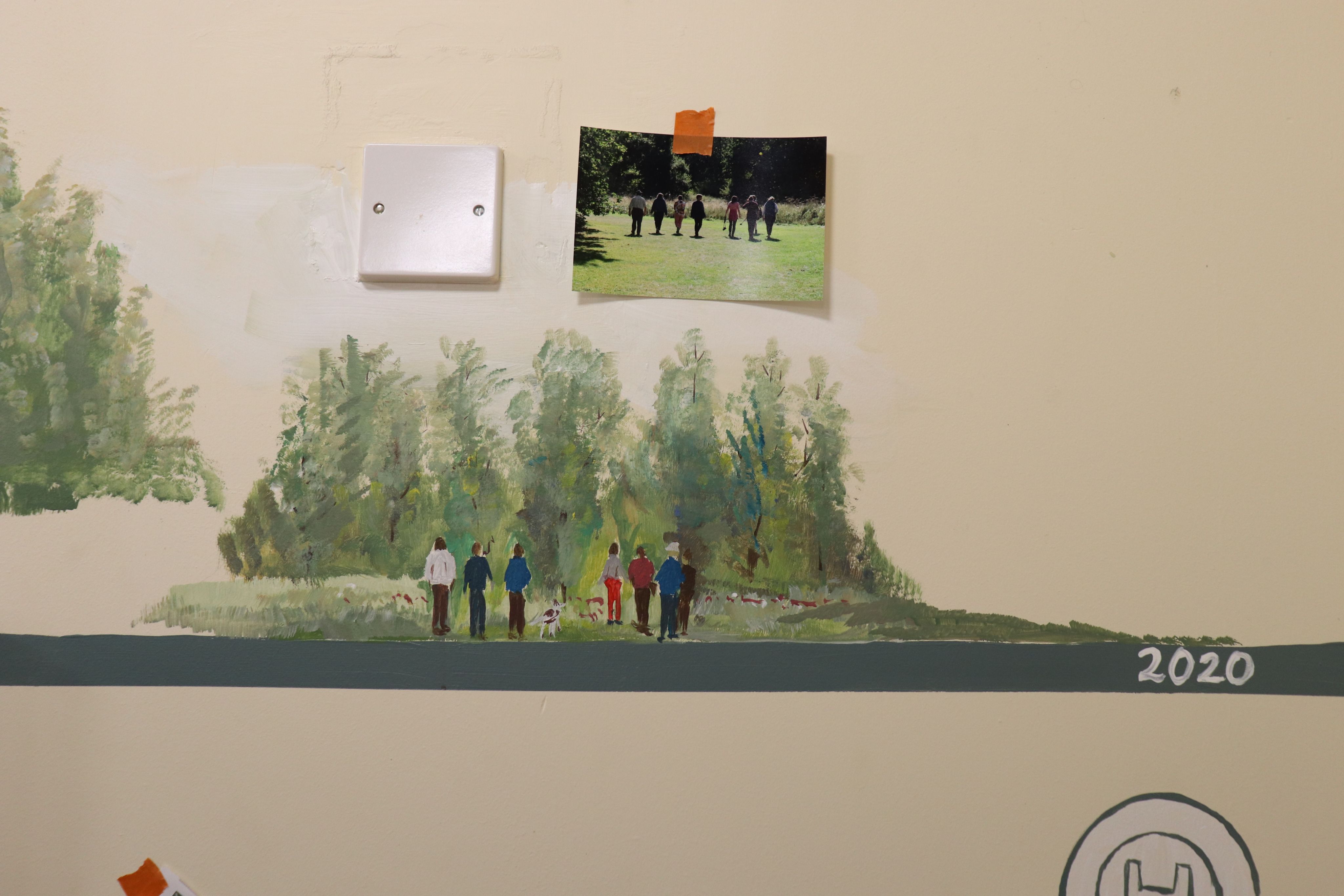
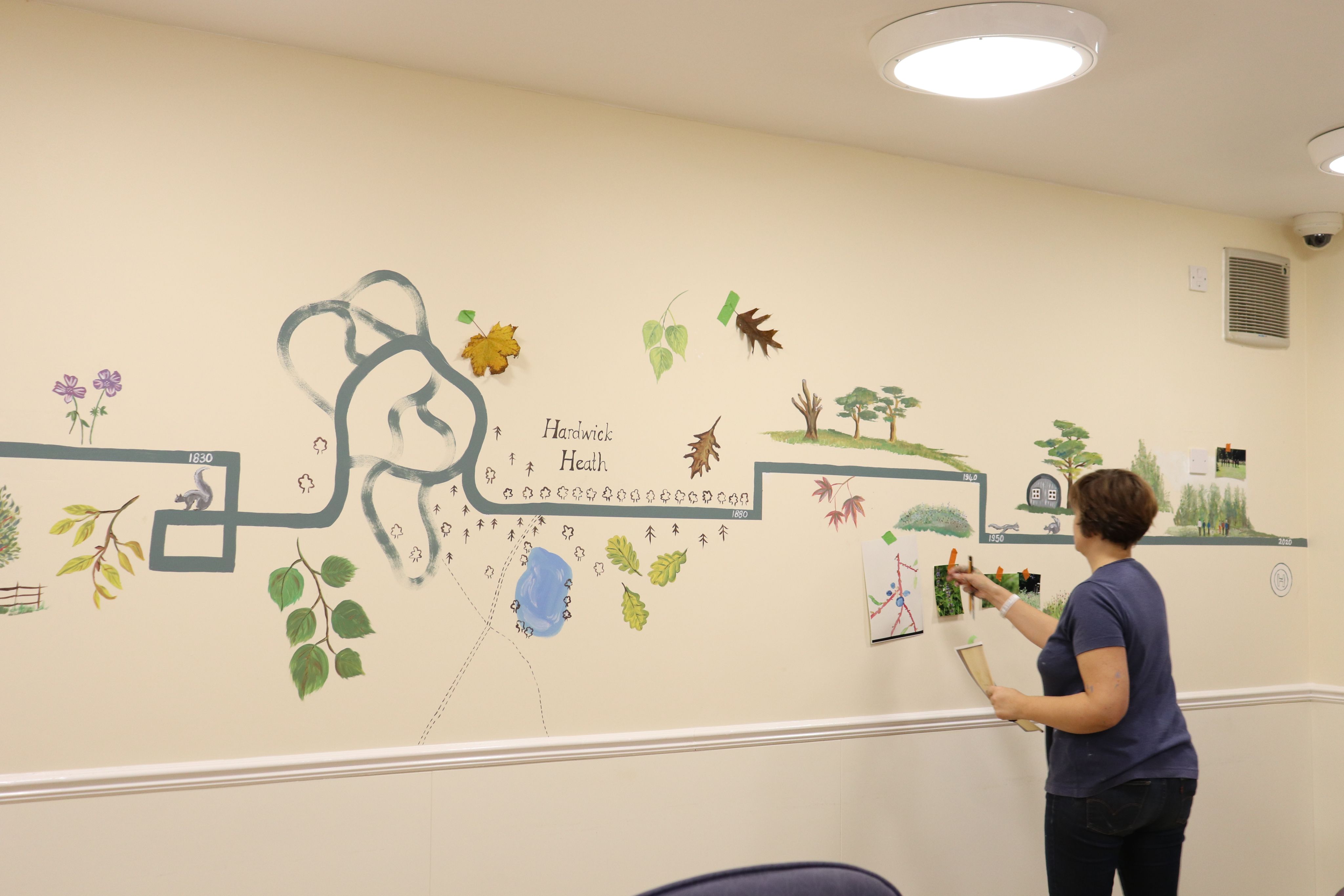
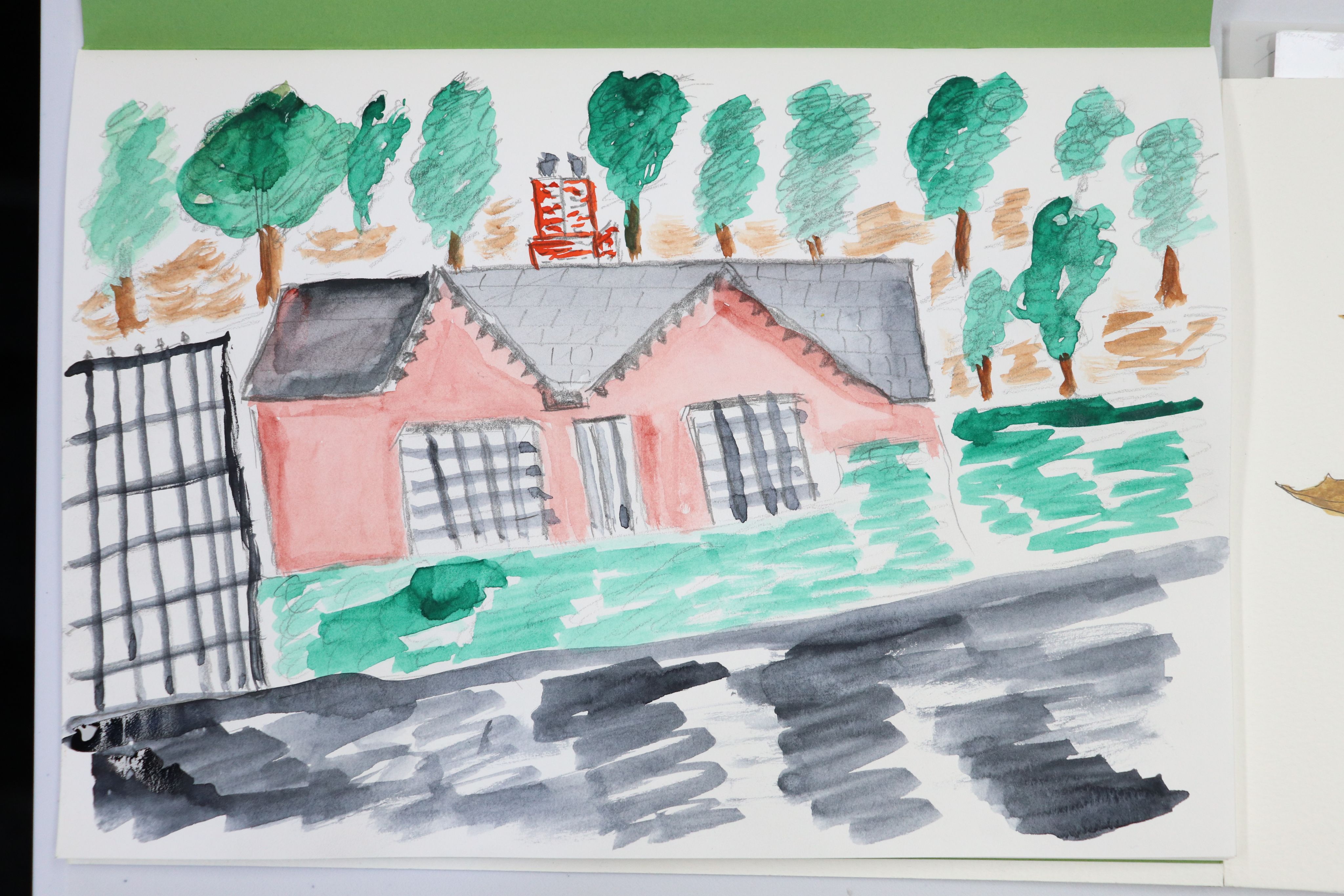
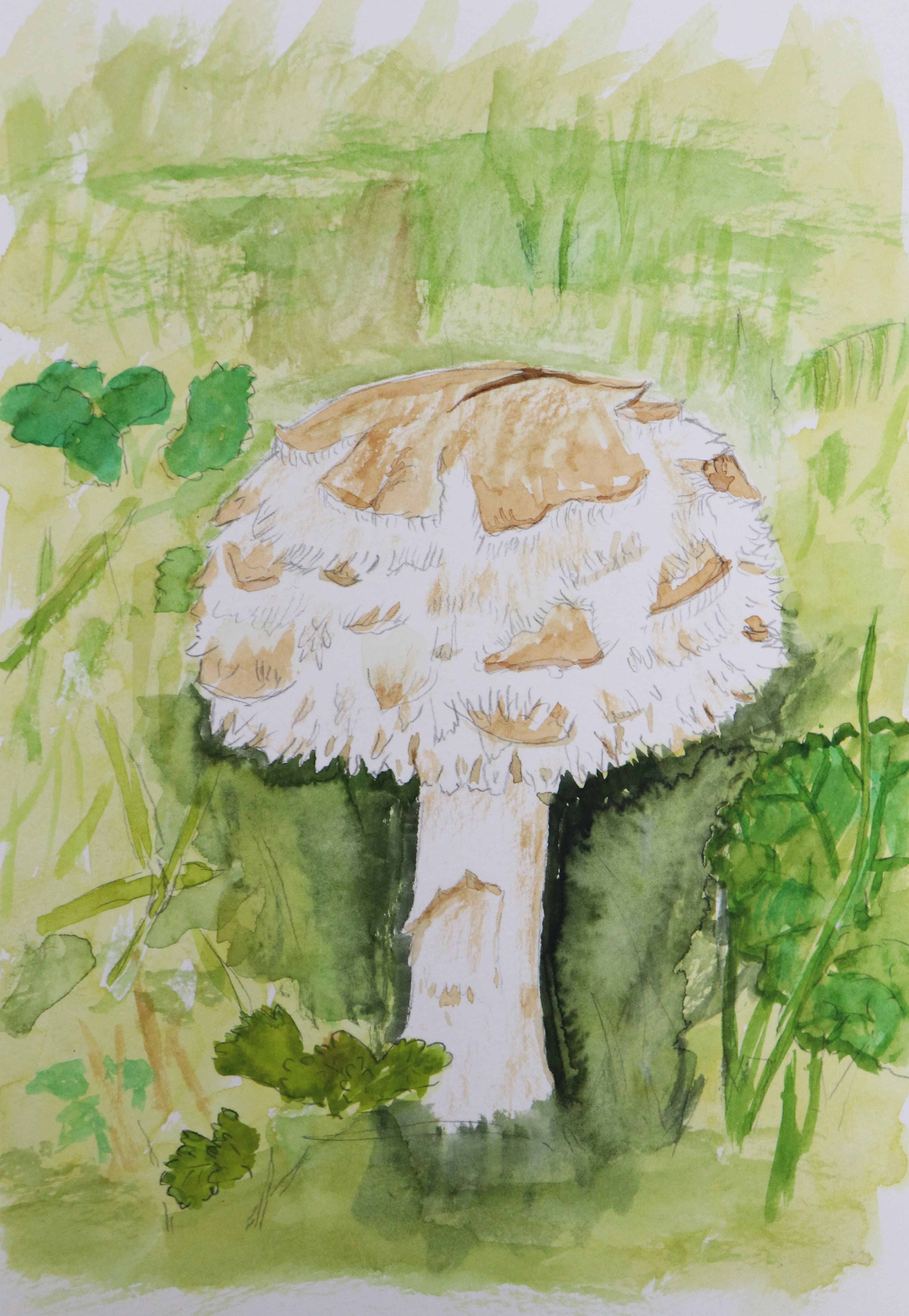
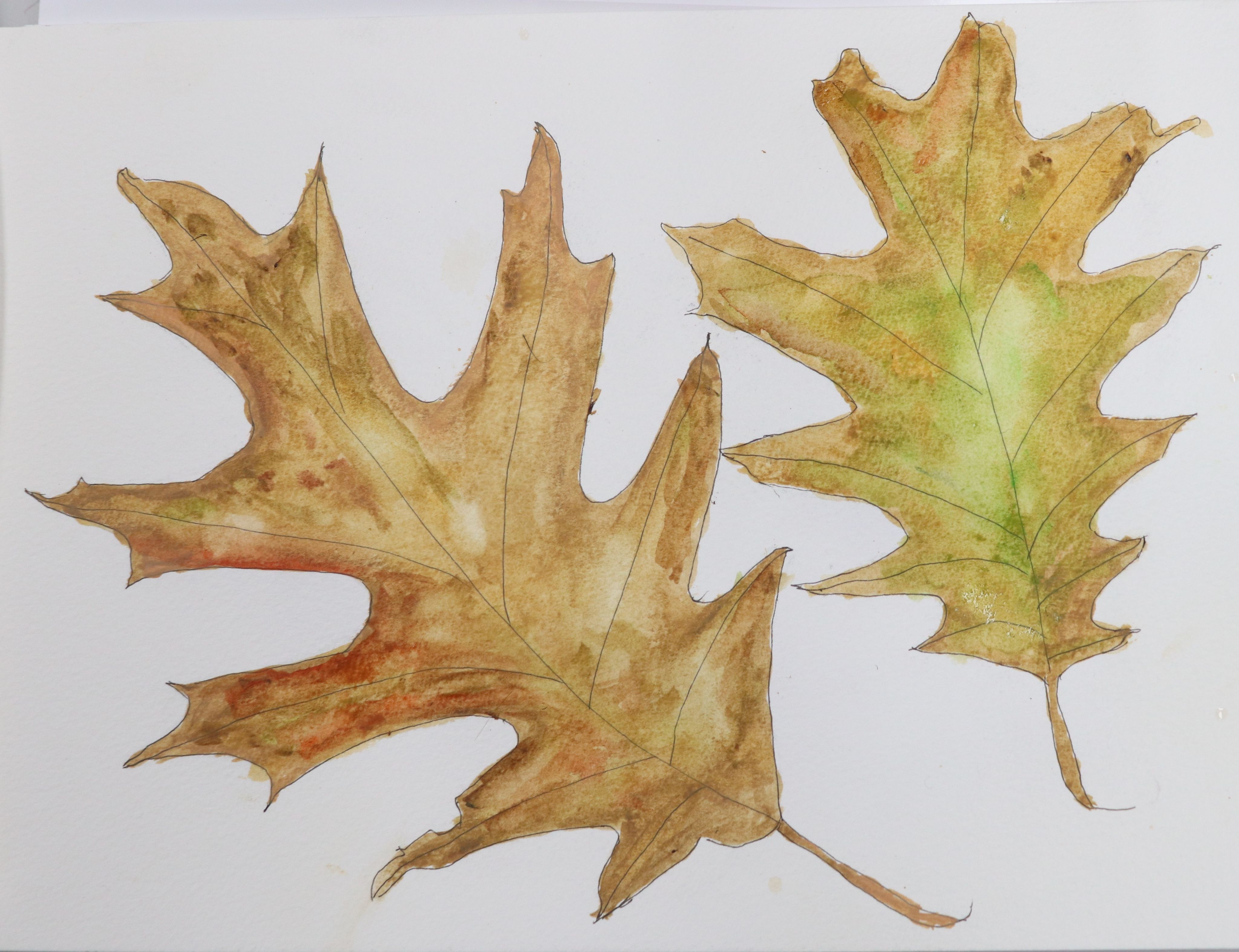
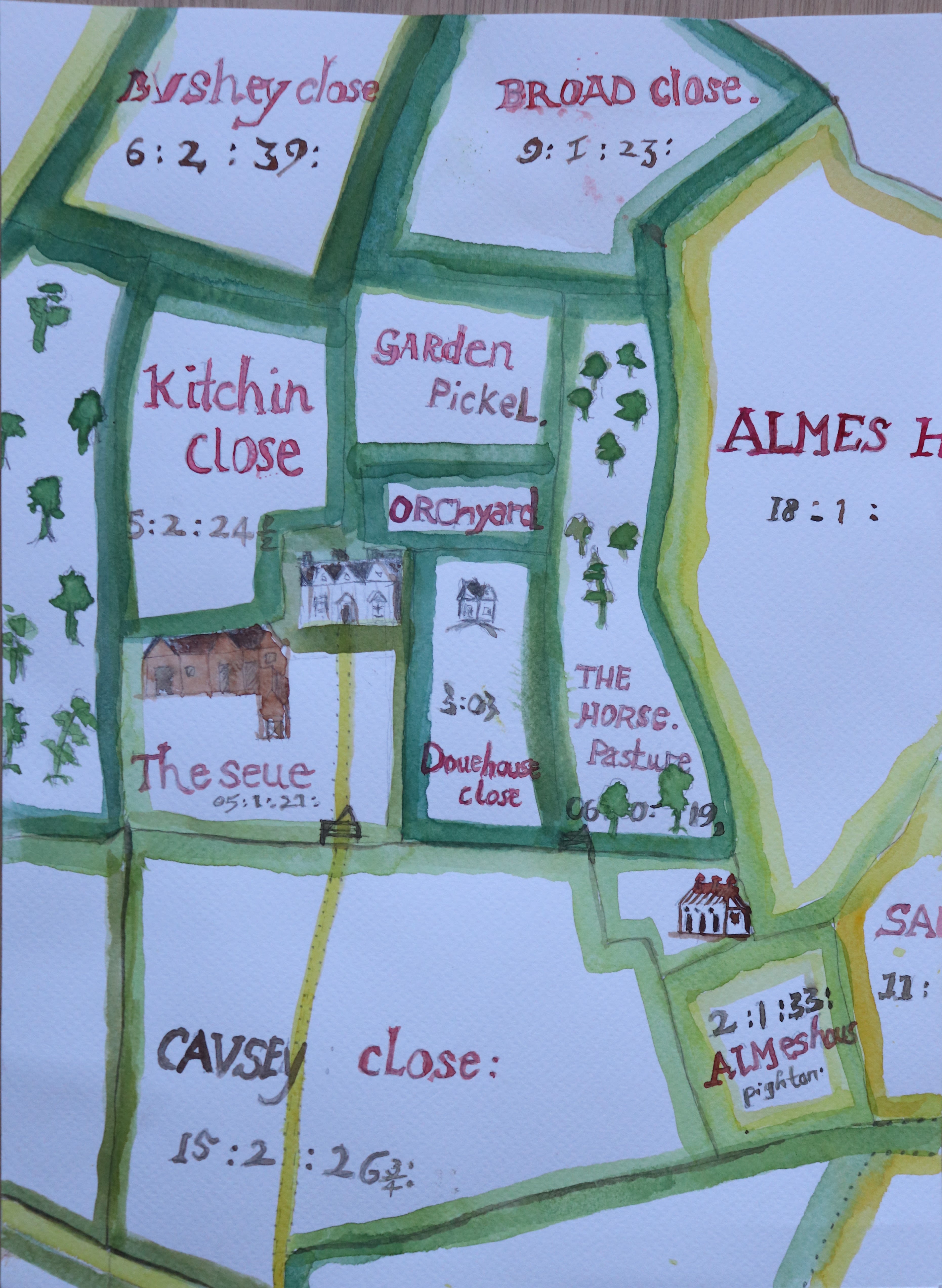

Painting of what Hardwick House may have looked like in 1610. Part of a mural painted for the Rooted in History Project.
Painting of what Hardwick House may have looked like in 1610. Part of a mural painted for the Rooted in History Project.

An interpretation of the map from 1663 (HD2418/93). Part of a mural painted for the Rooted in History Project.
An interpretation of the map from 1663 (HD2418/93). Part of a mural painted for the Rooted in History Project.

Painting of the 1663 map showcased above and what the house may have looked and surrounding area may have looked like in 1830. Part of a mural for the Rooted in History Project.
Painting of the 1663 map showcased above and what the house may have looked and surrounding area may have looked like in 1830. Part of a mural for the Rooted in History Project.

Painting of Hardwick House looked like when this mural was painted in 2020 as part of the Rooted in History Project.
Painting of Hardwick House looked like when this mural was painted in 2020 as part of the Rooted in History Project.

The painting of the mural for the Rooted in History Project in progress.
The painting of the mural for the Rooted in History Project in progress.

An painting of the house created by a participant of the Rooted in History project.
An painting of the house created by a participant of the Rooted in History project.

An mushroom painted by a participant of the Rooted in History project.
An mushroom painted by a participant of the Rooted in History project.

An painting of leaves created by a participant of the Rooted in History Project.
An painting of leaves created by a participant of the Rooted in History Project.

An interpretation of the map from 1663 (HD2418/93) created by a participant of the Rooted in History project.
An interpretation of the map from 1663 (HD2418/93) created by a participant of the Rooted in History project.
Further Links
The Cullum family come to Hardwick:
The English Civil Wars: History and Stories | English Heritage (english-heritage.org.uk)
The English Civil Wars: Origins, Events and Legacy | English Heritage (english-heritage.org.uk)
The end of The Abbey:
https://www.english-heritage.org.uk/visit/places/bury-st-edmunds-abbey/history/
The 1940s:
Photos of Hardwick from the Spanton-Jarman collection:
Gallery Viewer | Past and Present (burypastandpresent.org.uk)
